曲径通幽:中国佛寺建筑空间展——七塔禅寺主展在西班牙马德里建筑师官方协会隆重开幕
发布日期:2019-07-04 作者: 七塔禅寺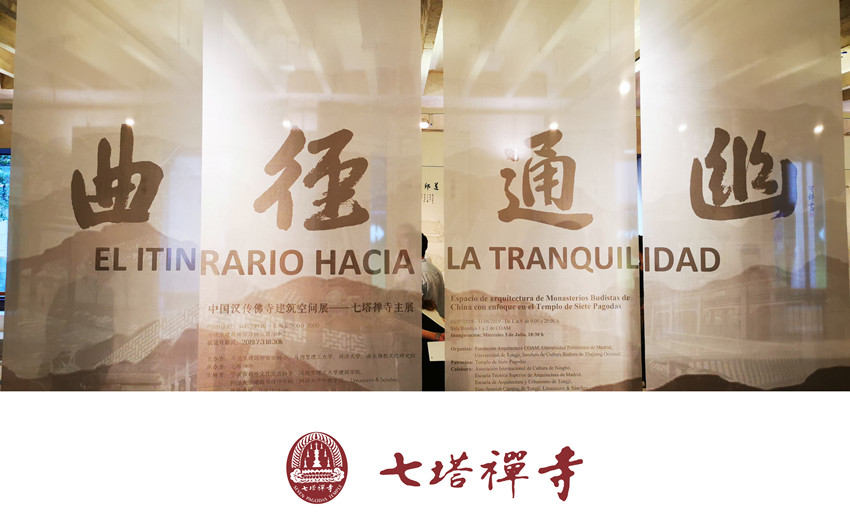
2019年7月3日下午,由西班牙马德里理工大学和中国同济大学、浙东佛教文化研究院主办,由中国七塔禅寺和西班牙马德里建筑师官方协会承办,获得西班牙马德里理工大学建筑学院和中国同济大学建筑与设计学院、同济大学中西学院、宁波市对外文化交流协会、Built Heritage期刊支持的中国佛寺建筑空间展——七塔禅寺主展在西班牙马德里建筑师官方协会隆重开幕。
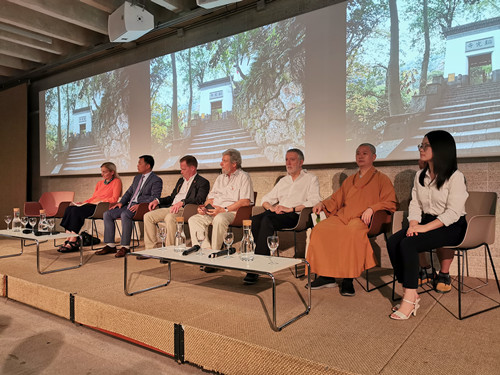
▲ 开幕式现场
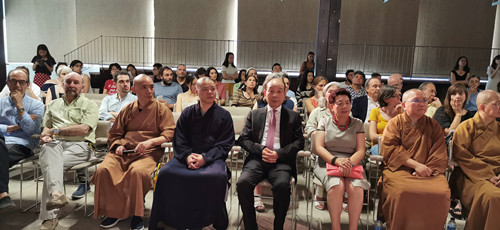
▲开幕式现场
开幕式由马德里建筑师官方协会发言人Mercedes Díez 主持。马德里建筑师官方协会秘书Maria Anton Barco致欢迎词,她首先感谢主办方马德里理工大学、同济大学和浙东佛教文化研究院,以及承办方七塔禅寺对展览的大力支持,同时对远道而来的可祥法师、界义法师和定光法师表示诚挚的欢迎与感谢;西班牙华人华侨协会会长毛峰指出,佛寺建筑的展出有助于中西文化交流和中西经贸往来,推动“一带一路”文化交流向广度和深度发展;马德里理工大学副校长Fco. Javier Jiménez Leube对展览内容给予高度评价,对展览的圆满举办表示庆祝;马德里理工大学前副校长Angel Alvarez 感慨道:近20年来,中国经济社会等方面发展取得的成就令人赞叹,对中国传统佛寺文化走进西班牙表示大力支持;马德里理工大学荣誉退休教授、西班牙著名建筑师José Ignacio Linazasoro对中国佛寺空间之美表示高度赞叹和肯定;浙东佛教文化研究院院长可祥法师在发言中指出,中国汉传佛教寺院建筑脱胎于中国古代的宫殿、贵族府第,以及行政衙署建筑,是中国传统建筑的重要组成部分,它是中国古代劳动人民智慧的结晶,是我们为之骄傲的、辉煌的艺术遗产。在漫长的中国佛教史上,汉传佛教寺院在佛教自身发展与促进中国传统文化发展和社会教育等方面,都发挥着重要的功能作用;此次展览的策展人、展出作品主要设计人王伟侨向各方致以感谢,并介绍展览的缘起、展览工作团队、佛教圣迹数据库(www.buddhist.wiki)的建设及预期发展情况。
出席展览开幕式的还有西班牙马德里理工大学、阿尔卡拉大学、马自治大学的有关专家学者、西班牙长城龙集团董事长李汝龙和各界人士逾120人。此次展览在马德里反响热烈,与会者都纷纷对七塔禅寺建筑空间之美赞叹不已。西班牙当地媒体《华人街》、《联合时报》、《Tectonica arquitectura 》期刊记者到场采访报道。
开幕式期间,马德里亚洲茶(Asia Te)餐厅的中国传统茶道助兴演绎受到与会者欢迎。
文:甬尚
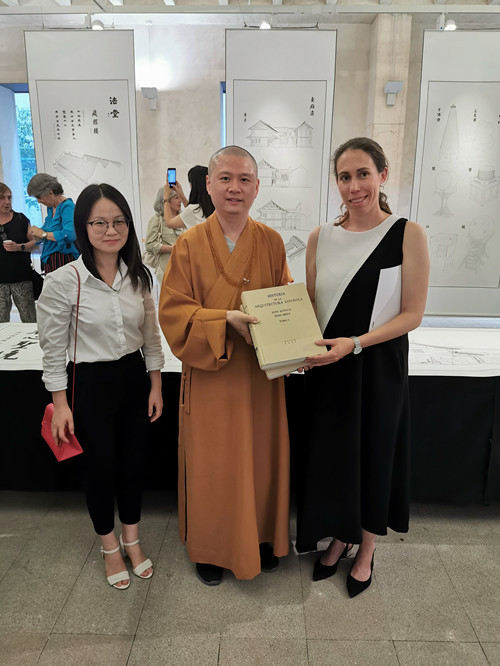
▲Maria Anton Barco代表马德里建筑师官方协会向可祥法师赠送欧洲建筑书籍
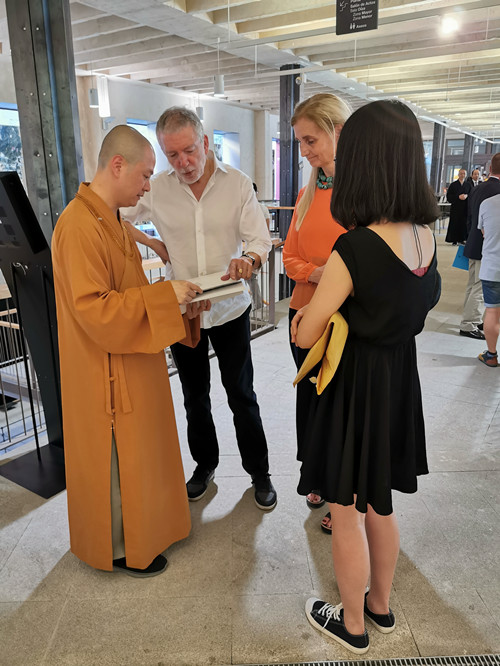
▲马德里理工大学荣誉退休教授、西班牙著名建筑师José Ignacio Linazasoro向可祥法师赠送他设计的建筑作品集
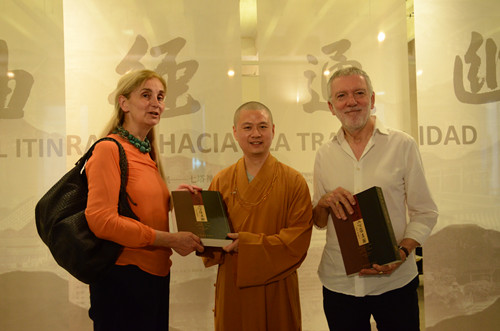
▲可祥法师向嘉宾赠送《七塔禅寺五百罗汉图》
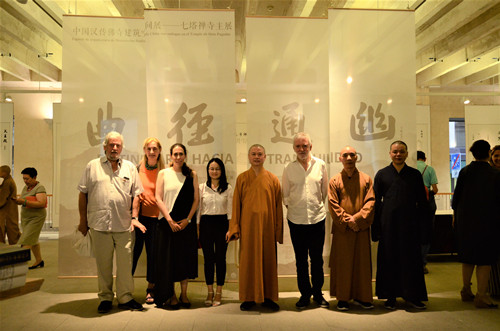
▲可祥法师与José Ignacio Linazasoro教授等合影
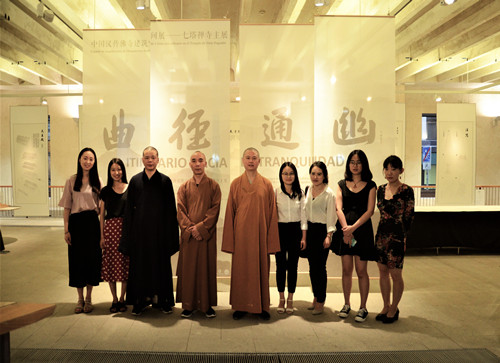
▲可祥法师与建筑策展团队合影
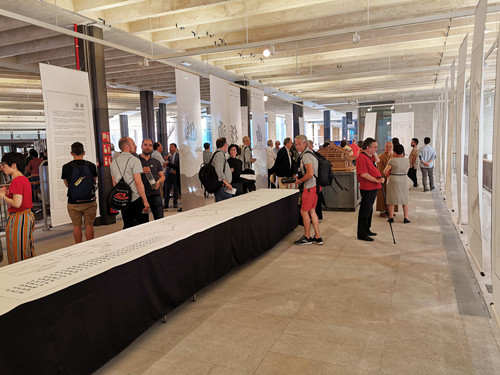
▲展览现场
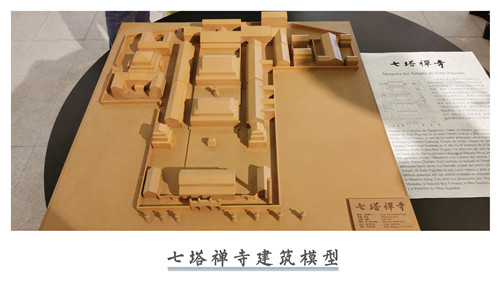
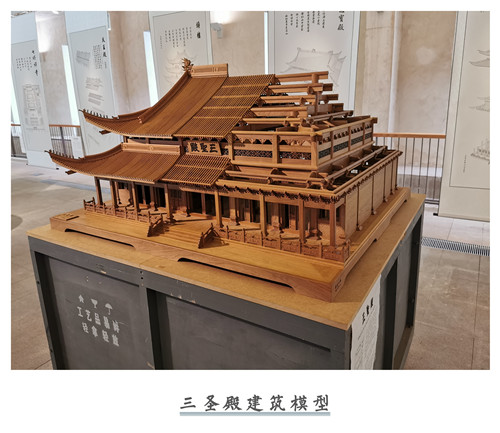
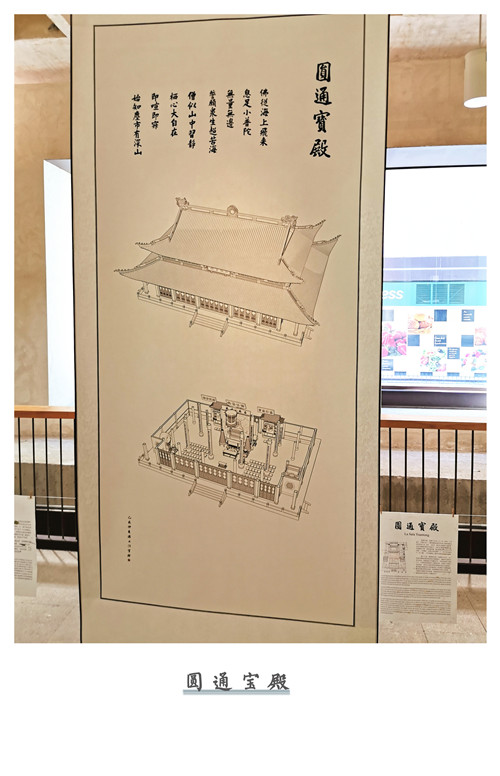
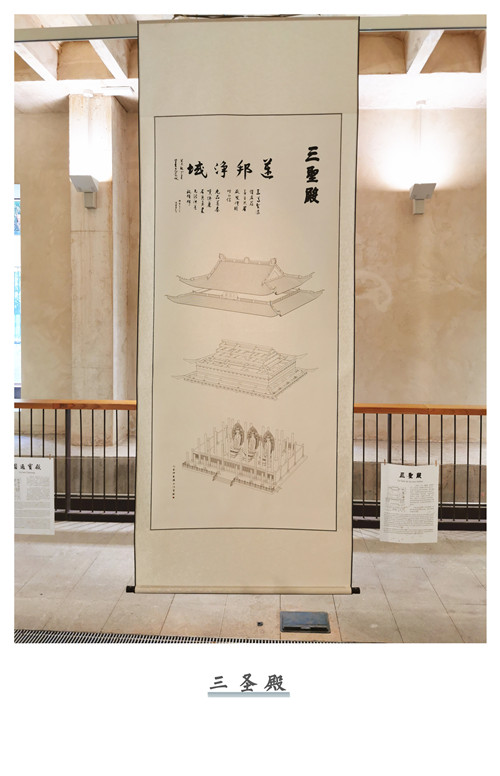
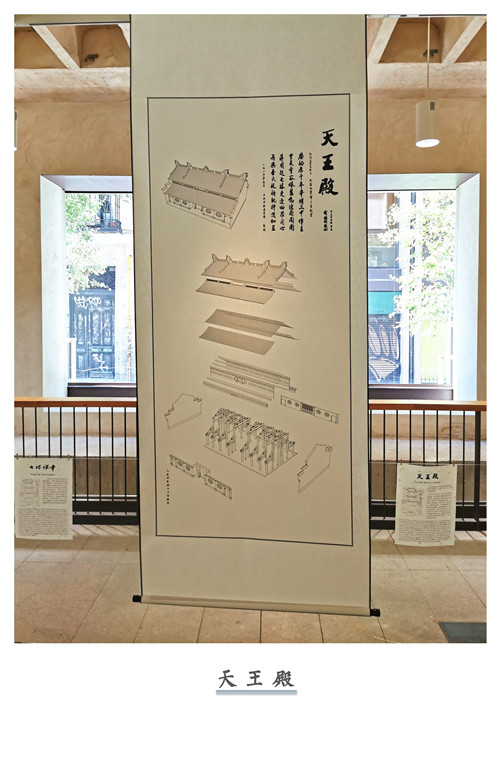
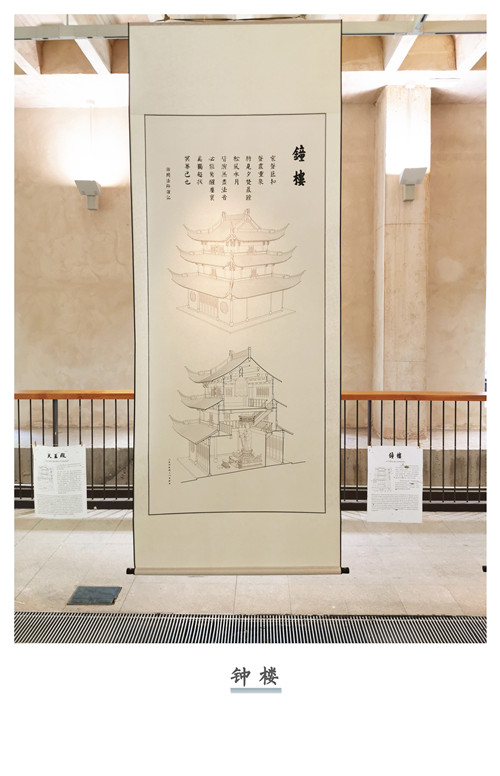
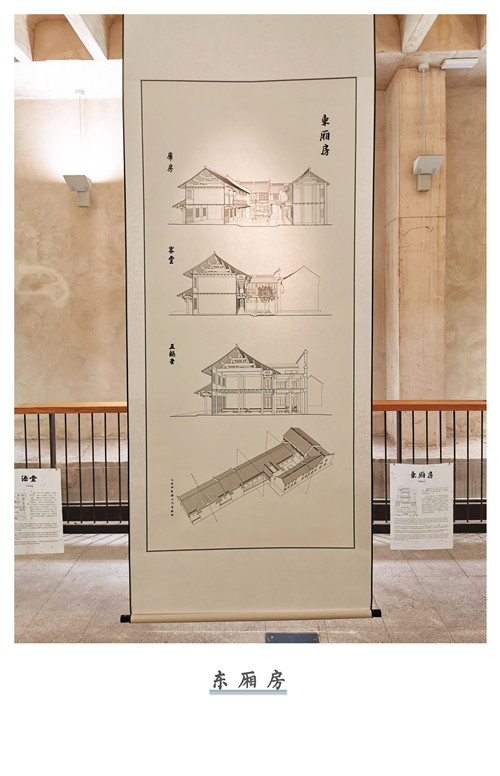
从甬江东岸到马德里 搭起中西交流新桥梁
中国佛寺建筑空间展——在七塔禅寺主展开幕式上的致辞
可祥
尊敬的女士们、先生们:
下午好!
有缘天涯咫尺,很高兴见到大家。期待许久的“中国佛寺建筑空间展——七塔禅寺主展”,今天开幕了!我谨代表主办方浙东佛教文化研究院,承办方七塔禅寺,向为这次展事活动无偿提供场地的马德里建筑师官方协会,以及马德里理工大学、中国同济大学等有关单位的支持,表示由衷的感谢!向马德里理工大学建筑学院博士研究生王伟侨同学及其团队,展示以七塔禅寺为主的佛寺建筑空间设计成果,表示祝贺!
中国汉传佛教寺院建筑脱胎于中国古代的宫殿、贵族府第,以及行政衙署建筑,是中国传统建筑的重要组成部分,它是中国古代劳动人民智慧的结晶,是我们为之骄傲的、辉煌的艺术遗产。在漫长的中国佛教史上,汉传佛教寺院在佛教自身发展与促进中国传统文化发展和社会教育等方面,都发挥着重要的功能作用,具体归纳起来有四:
一、供设与参拜的功能。在汉传佛教中,寺院主要建筑的空间是用来供奉佛像,设置佛具,以供僧众和社会大众参拜与祈祷。
二、生活与学修的功能。汉传佛教寺院在供佛与礼佛的区域之外,还有僧侣生活与学修的院落,如斋堂、经堂、禅堂、念佛堂等。
三、展示艺术的功能。汉传佛教寺院不但自身建筑是整体的艺术,而且还无不包含着精美的壁画、雕塑、楹联、匾额、园林艺术等,这些艺术中不乏名家作品。因此可以说,佛教寺院就是艺术殿堂。
四、参观旅游的功能。佛教建筑丰富了人民的生活,因为社会大众可以在寺中欣赏艺术,在庭院中休息交际,登临瞭望。因此可以说,佛教寺院建筑担负着公共建筑的功能。
七塔禅寺开山于公元858年,至今已有1161年的历史。现存的主要历史建筑大多建造于清末民初时期,为典型的明清建筑风格,是江南佛教建筑的代表。它是宁波这座历史文化名城的重要遗存,现为汉传佛教重点开放寺院,省级文物保护单位。王伟侨同学及其团队以学术的视角,专业的水准,科学的精神,对七塔禅寺建筑空间进行全面细密的研究,研究成果有利于对这座古刹的科学保护,有利于提升这座古刹的知名度和影响力。有兴趣的朋友,不妨开启这次建筑空间展的窗扉,了解悠远而博大的中国文化吧!
Build the new communication bridge between China and Spain:
from the east bank of the Yongjiang River to Madrid
Kexiang's speech in the exhibition on the architecture space of Buddhist Monasteries of China with focus on Seven Pagodas Temple.
Kexiang
Dear Ladies and Gentlemen:
Good afternoon!
It is my honor to give a talk in this wonderful meeting, which unites us from two points so far from the world. Today is the opening ceremony of the exhibition that we have been looking forward to for a long time. As a representative of both the organizer of the exhibition - the Research Institute of the Buddhist Culture of Eastern Zhejiang, and the sponsor – Seven Pagodas Temple, I would like to express my sincere thanks to the Official College of Architects of Madrid for having offered such impressive space, and to the Technical University of Madrid and the Tongji University for the invaluable support. Especially, I would like to congratulate Wang Weiqiao, the Ph.D. candidate of the Architecture School of Technical University of Madrid, and her team, who present their architectural research focused on Seven Pagodas Temple through the design of this exhibition.
The architecture of the Chinese Buddhist monasteries was born out of the traditional royal palaces, the aristocratic residences and the old government buildings. It is both an important typology within Chinese architecture, and a precious artistic heritage, created by the ancient laboring people of China. Throughout the great Buddhist history in China, the Buddhist monasteries have played a fundamental role, both in the development of Buddhism itself, in the progress of traditional culture and even in the education of society.Its contribution can be summarized in four aspects:
First, it serves as a place for veneration and adoration. In Chinese Buddhist Monasteries, main halls are used to placed Buddha Statues and Buddhist instruments, so that monks and the public can worship Buddha statues and chanting.
Second, it offers a place to live and study. In addition to sacred space in the central area for worshiping Buddha, there are also courtyards to satisfy monks’ daily life and practice needs, such as dining hall, sutra hall, meditation hall and chanting hall.
Third, the function of displaying art. For Chinese Buddhist Monasteries, not only the group of architecture can be referred as unified art, but also it contains exquisite murals, sculptures, couplets, plaques, garden art, etc.Among them, most of works are created by great artists. That is why monasteries can be regarded as art museums.
Fourth, as a point of tourist interest. It can greatly enrich daily life of the public. In the monasteries, people can admire the art, rest in the courtyard and climb to upstairs to enjoy the panorama of the temple.Therefore, it can be said that Buddhist temple bear the function of public buildings.
Seven Pagodas Temple was founded in the year 858 and has a history of 1161 years. Most of the major historical buildings were built in the late Qing Dynasty and the early Republic of China. They are typical Ming and Qing architectural styles. Also, they can be referred as representative of Buddhist architecture in the south of the Yangtze River. Seven Pagodas Temple is an important heritage of Ningbo, a city with a significant cultural role in the history of China. Nowadays, it is not only ranked as National Key Buddhist Temples in Han Chinese Area, but also named the provincial cultural relics protection units.
Wang Weiqiao and her team Yuan Studio have done a fine and complete architectural research on this monastery from an academic point of view, with a high professional level and a scientific attitude. The result of this research benefits the protection of this ancient monastery, fosters its visibility and influence. Last but not the least, I would like to sincerely welcome all of you, who may be interested in exploring the long and abundant history of China, come to the exhibition. I am sure that it is going to be a beautiful start.
Thank you.
地址:中国宁波市鄞州区百丈路183号 邮编:315040 电话:0574-87755337 / 87756555 传真:0574-87710602
版权所有 © 2016 七塔禅寺 QITA TEMPLE. 浙ICP备2020040969号-1 技术提供:和众互联